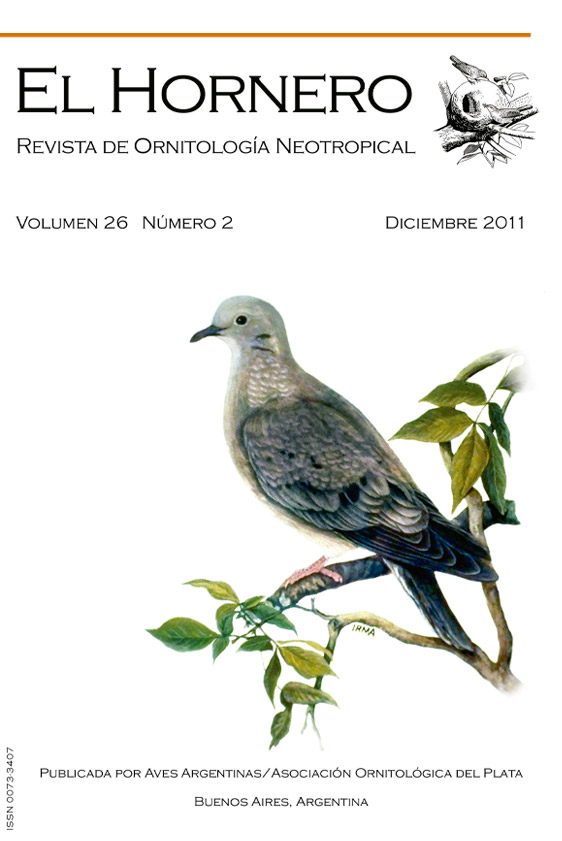Abstract
We made descriptions on the nesting of the Strong-billed Woodcreeper (Xiphocolaptes promeropirhynchus) and the Black-banded Woodcreeper (Dendrocolaptes picumnus) from observations in nest boxes at the Santa Marta Mountains, Colombia. Both species lined their cavities with dry leaves or flakes of bark, clutch sizes were of two or three eggs for Xiphocolaptes promeropirhynchus and just one egg for Dendrocolaptes picumnus, and chicks were similar to other woodcreepers’ chicks. Although nest boxes could be useful for obtaining information of cavity nesters, information on natural nests is required to validate our data.
References
BOTERO-DELGADILLO E Y PÁEZ CA (2011) Estado ac-tual del conocimiento y conservación de los lorosamenazados de Colombia. Conservación Colombiana14:86–151
COCKLE KL Y BODRATI AA (2009) Nesting of thePlanalto Woodcreeper (Dendrocolaptes platyrostris).Wilson Journal of Ornithology 121:789–795
EVANS MR, LANK DB, BOYD WS Y COOKE F (2002) Acomparison of the characteristics and fate of Bar-row’s Goldeneye and Bufflehead nests in nest boxesand natural cavities. Condor 104:610–619
MARANTZ CA, ALEIXO A, BEVIER LR Y PATTEN MA(2003) Family Dendrocolaptidae (woodcreepers).Pp. 358–447 en: DEL HOYO J, ELLIOTT A Y CHRISTIEDA (eds) Handbook of the birds of the world. Vol-ume 8. Broadbills to tapaculos. Lynx Edicions,Barcelona
NORRIS AR, COCKLE KL Y MARTIN K (2010) Evidencefor tolerance of parasitism in a tropical cavity-nesting bird, Planalto Woodcreeper (Dendrocolaptesplatyrostris), in northern Argentina. Journal of TropicalEcology 26:619–626

This work is licensed under a Creative Commons Attribution-NonCommercial 4.0 International License.





